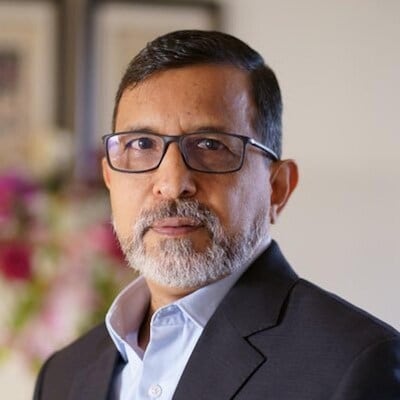US Fed rate cut to help emerging nations in taking similar step: CRISIL
Dharmakirti Joshi, DK Joshi, Crisil | Credit: X
The US Fed rate cut of 50 basis points will make it easier for the central bank in emerging countries, including India, to slash key policy rates, CRISIL Chief Economist D K Joshi said on Thursday.
Joshi also said CRISIL is expecting food inflation to come down for FY25 if monsoon does not play spoilsport at the end of the season.
“US Fed rate cut makes it easier for central banks in emerging countries, including India, to cut rates. But rate cuts in India, I think, will happen when there is a durable reduction in food inflation. And we do expect durable inflation to take place because higher than normal monsoon rains are playing out this year. So, the stars have aligned for rate cuts to happen in India,” Joshi told PTI.
“Our forecast is that the RBI may cut key policy rates within this calendar year,” he said.
Late Wednesday, the US Federal Open Market Committee voted to cut the federal funds rate target range by 50 bps to 4.75-5 per cent, from 5.25-5.50 per cent, against expectations of a cut half that size.
The US central bank had kept interest rates at an over two-decade high for 14 months.
He said the economy has done reasonably well with the first quarter data showing private consumption is picking up and investments have been strong.
“So clearly I think the growth momentum currently informs us that 6.8 GDP growth this fiscal year is very much likely and for the medium-term, the growth outlook is around 6.7 per annum. It will take India to $7.2-trillion (economy) by 2030-31 from $ 3.6 trillion (economy)…” he said.
So the base case scenario is of a reasonably healthy rate of growth, probably the fastest rate in the world among large countries, he said, adding that this will have an impact on consumption as well as growth.
“If we distribute this growth, well I think the consumption will also become broad-based. For that, I think the government has taken steps to skill the population, among others. All those things will gradually begin to bear fruit,” Joshi said.
He said there is also nudging the corporate sector to hire more people via incentives, among others. “So, all these are very positive moves, aimed at improving the contribution of the number to the overall growth,” he said.
“Inflation, I think, has stayed much higher than expected only because of food, and food inflation is beginning to show signs of correcting. And if monsoon does not play spoilsport at the end of the season, I think we would see food inflation come down. Overall, our projection is inflation will be at 4.5 per cent average for 2024-25,” Joshi said.
He also said the private sector investment is gradually picking up in sectors like steel and cement, adding that because the government is investing, therefore, the private sector is also investing in steel and cement.
A broad-based private investment uptick is going to take time, it is going to move gradually because of the uncertain environment that the industry is facing, he said.
Earlier S&P Global in a report released on Thursday said India is on track to becoming the third-largest economy by 2030-31, driven by a projected annual growth rate of 6.7 per cent this fiscal year.
The report also said with 8.2 per cent growth rate in FY24, continued reforms are crucial to improving business transactions and logistics, boosting private sector investment, and reducing reliance on public capital.
It, however, added that a high food inflation rate in the face of climate change could constrain monetary policy, making investment more expensive.
To maximise trade benefits, India must develop infrastructure and geopolitical strategies, particularly regarding its extensive coastline, said the first edition of ‘India Forward: Emerging Perspectives’ report.
Nearly 90 per cent of India’s trade is seaborne, necessitating robust port infrastructure to manage increasing exports and bulk commodity imports, it added.
The need is to address critical infrastructure issues such as irrigation, storage, and supply distribution to ensure food security and economic stability, it added. The S&P Global India Research Chapter’s inaugural study was launched here on Thursday.
(Only the headline and picture of this report may have been reworked by the Business Standard staff; the rest of the content is auto-generated from a syndicated feed.)
First Published: Sep 19 2024 | 11:13 PM IST
